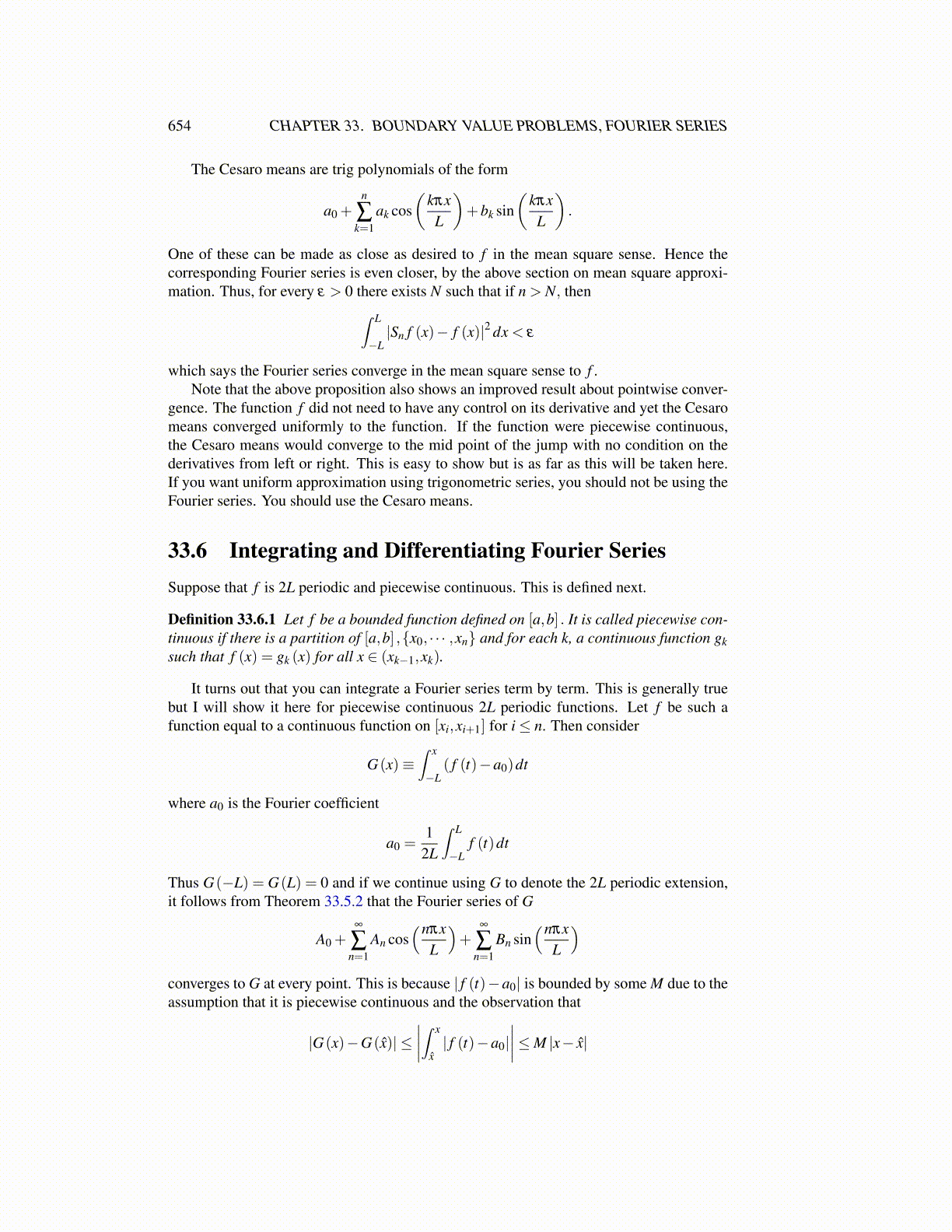
654 CHAPTER 33. BOUNDARY VALUE PROBLEMS, FOURIER SERIES
The Cesaro means are trig polynomials of the form
a0 +n
∑k=1
ak cos(
kπxL
)+bk sin
(kπxL
).
One of these can be made as close as desired to f in the mean square sense. Hence thecorresponding Fourier series is even closer, by the above section on mean square approxi-mation. Thus, for every ε > 0 there exists N such that if n > N, then∫ L
−L|Sn f (x)− f (x)|2 dx < ε
which says the Fourier series converge in the mean square sense to f .Note that the above proposition also shows an improved result about pointwise conver-
gence. The function f did not need to have any control on its derivative and yet the Cesaromeans converged uniformly to the function. If the function were piecewise continuous,the Cesaro means would converge to the mid point of the jump with no condition on thederivatives from left or right. This is easy to show but is as far as this will be taken here.If you want uniform approximation using trigonometric series, you should not be using theFourier series. You should use the Cesaro means.
33.6 Integrating and Differentiating Fourier SeriesSuppose that f is 2L periodic and piecewise continuous. This is defined next.
Definition 33.6.1 Let f be a bounded function defined on [a,b] . It is called piecewise con-tinuous if there is a partition of [a,b] ,{x0, · · · ,xn} and for each k, a continuous function gksuch that f (x) = gk (x) for all x ∈ (xk−1,xk).
It turns out that you can integrate a Fourier series term by term. This is generally truebut I will show it here for piecewise continuous 2L periodic functions. Let f be such afunction equal to a continuous function on [xi,xi+1] for i≤ n. Then consider
G(x)≡∫ x
−L( f (t)−a0)dt
where a0 is the Fourier coefficient
a0 =1
2L
∫ L
−Lf (t)dt
Thus G(−L) = G(L) = 0 and if we continue using G to denote the 2L periodic extension,it follows from Theorem 33.5.2 that the Fourier series of G
A0 +∞
∑n=1
An cos(nπx
L
)+
∞
∑n=1
Bn sin(nπx
L
)converges to G at every point. This is because | f (t)−a0| is bounded by some M due to theassumption that it is piecewise continuous and the observation that
|G(x)−G(x̂)| ≤∣∣∣∣∫ x
x̂| f (t)−a0|
∣∣∣∣≤M |x− x̂|